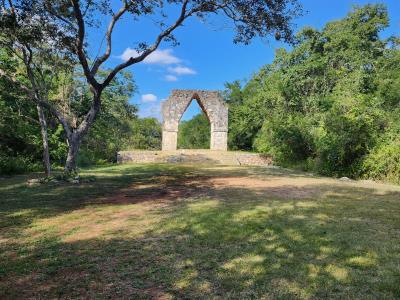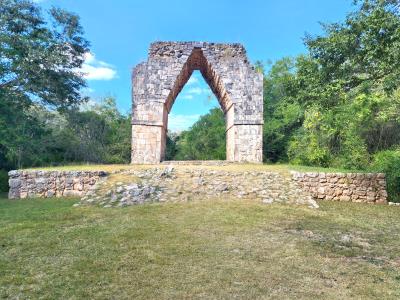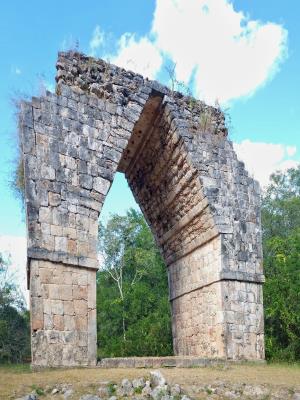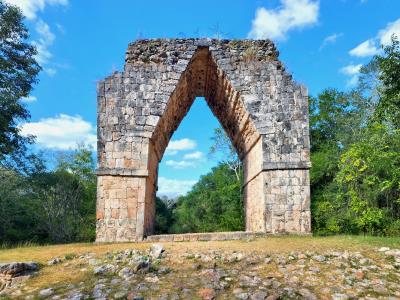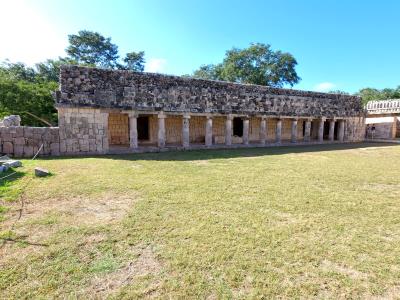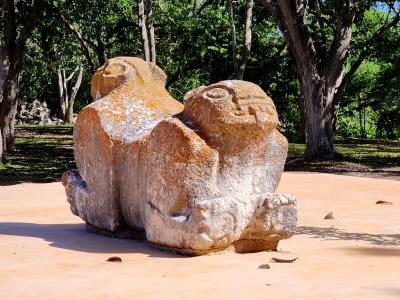Day 2 1/12/2024
Uxmal & Kabah, Mexico
Frank's Trip
CLICK on any image to enlarge - use mouse cursor to move enlargement it if doesn't fit area
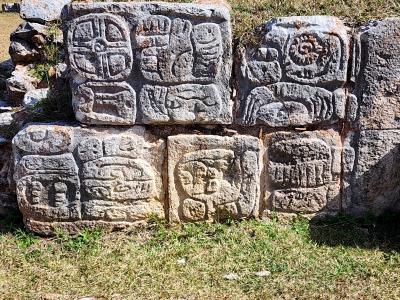
Uxmal and Kabah...
The day was a nice one as I set off early from the hotel with my taxi driver. As always, I avoided the guided trip with a group in favor of being able to go when and where I wanted and stay as long or leave as soon as I wanted. And as I get older I find that I see the guided groups walking by at a faster pace than I would want - often much faster. They don't have the time to linger and get the pictures they want or, sometimes to just sit down, rest, maybe have a cigarette, enjoy a cool breeze...
I knew, of course, that I wanted to see Uxmal. But a little research put me on to Kabah - another Mayan site very close and supposed to be very interesting. It was a much smaller site (which, after doing Uxmal, was a very good thing) but every bit as interesting on a smaller scale. Excellent day!
 Uxmal
Uxmal
Uxmal was prehistoric site dating to about 700 AD and a provincial capital of the Mayan Empire, and it’s one of the most visited archeological sites in Mexico (about 350,000 visitors annually).
Its well-preserved ruins include the iconic Pyramid of the Magician (Pyramid of the Soothsayer), which consists of 5 temples built on top of one another, and is believed to be over 1,000 years old. Legend has it that the magnificent pyramid was built overnight by a dwarf who then became the ruler of Uxmal. Uxmal had some 25,000 inhabitants. The layout of the buildings, which date from between 700 and 1000, reveals a knowledge of astronomy.
The Governor’s Palace is a highlight. It’s the largest building at Uxmal, and it’s thought to have been used for political, administrative, and religious purposes. It’s also considered to be the finest example of Puuc architecture, which is characterized by intricate stone carvings.The Pyramid of the Soothsayer, as the Spaniards called it, dominates the ceremonial center. The ceremonial sites of Uxmal, Kabah, Labna and Sayil are considered the high points of Mayan art and architecture.
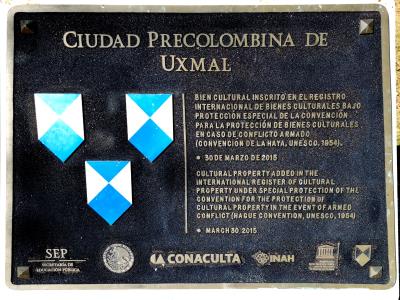
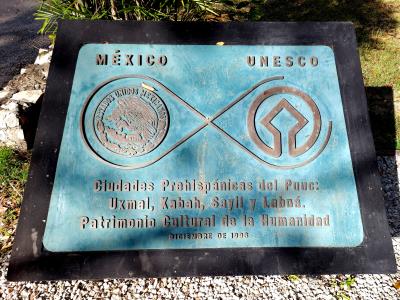
Piramide del Adivino - Pyramid of the Magician / Soothsayer
The imposing 115' high pyramid, built throughout five different periods over previous structures, is unique in the sense that it has rounded edges instead of the typical straight edges.
The pyramid is also known as The House of the Dwarf. Forget about the five periods archaeologists say it took to build it. According to a legend, a magical dwarf accepted a challenge from the king to prove that he was what he said he was. POOF! Next day - instant pyramid! There are those who doubt the veracity of this legend...
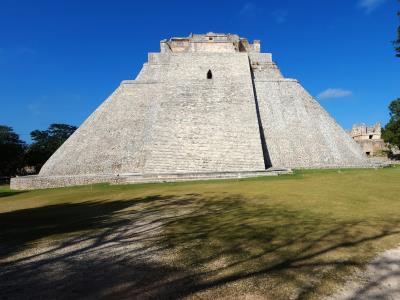
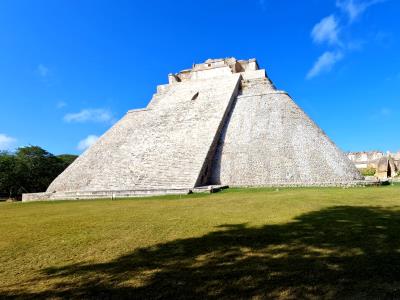
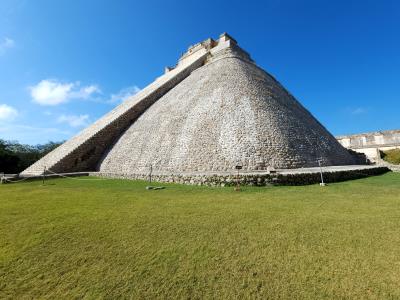
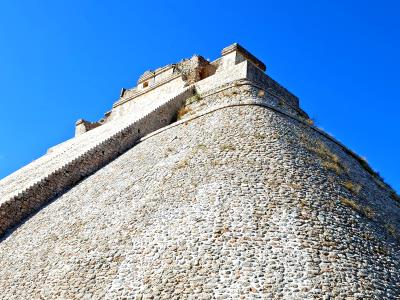
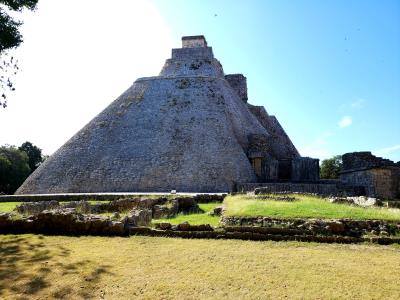
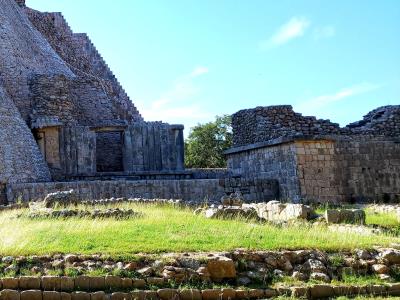
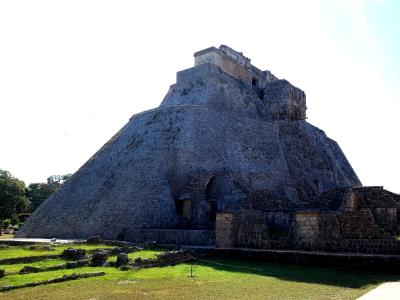
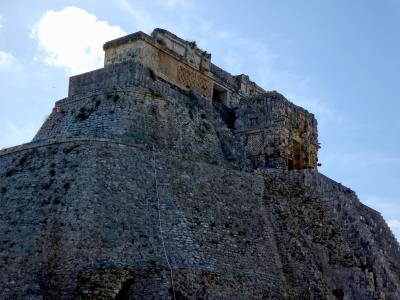
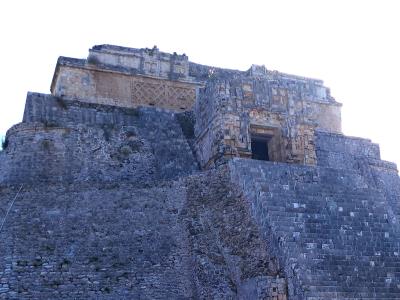
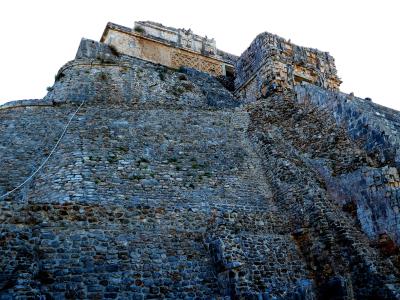
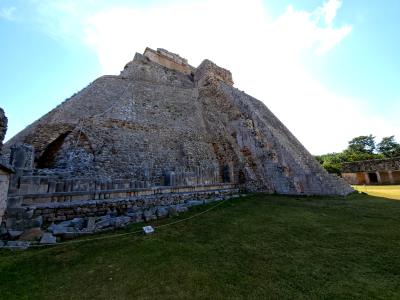
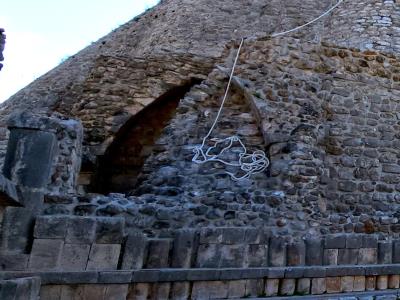
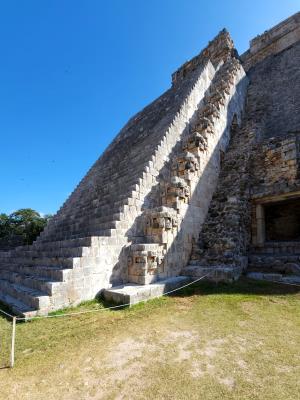
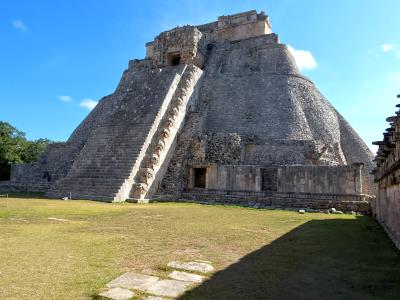
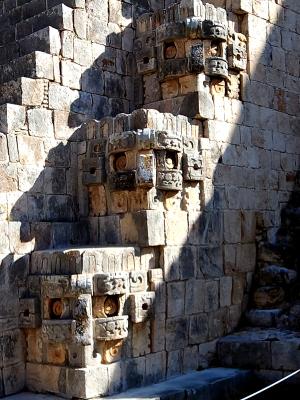
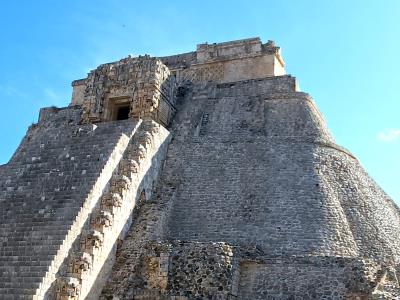
Quadrangle of the Birds
This building (below) with the detail of the Macaws on the roof is among those in the 'Quadrangle of the Birds' near the base of the Soothsayer's Pyramid. Macaws are a symbol of Kinkinich Kakmo, god of the sun.
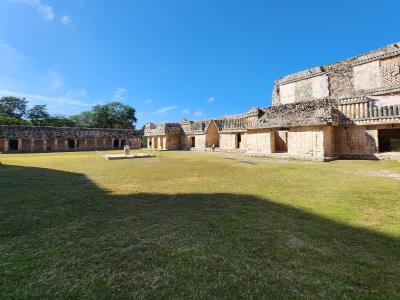
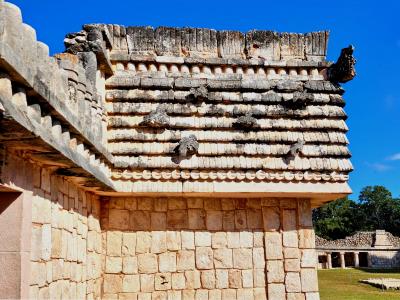
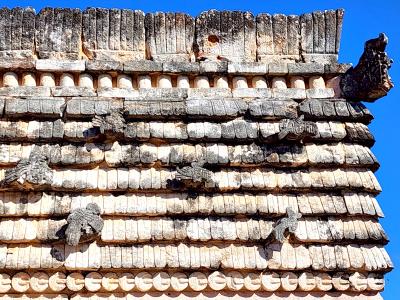
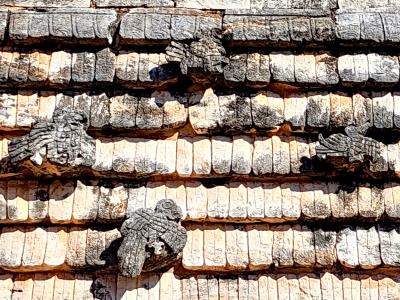
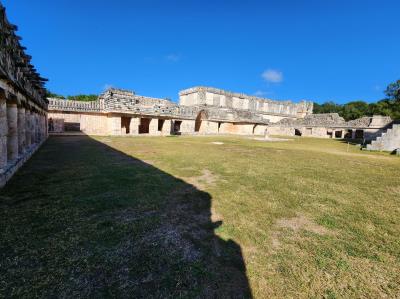
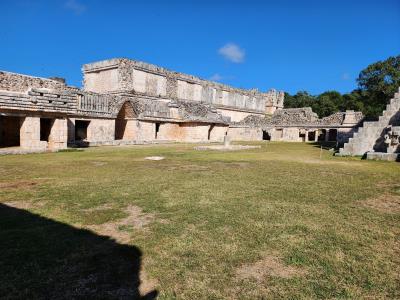
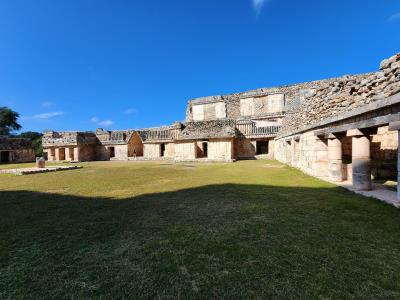
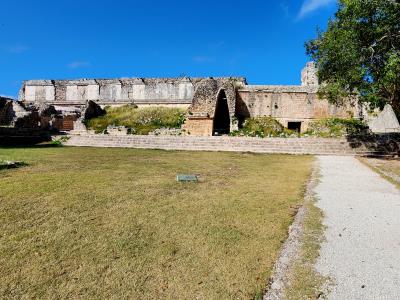
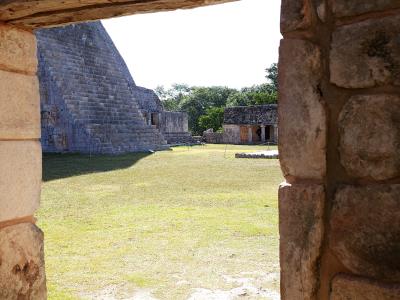
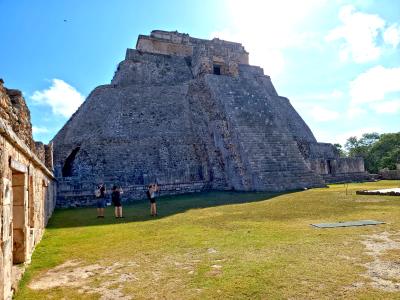
El Pórtico del Oriente - The East Portico
Archaeologists believe that, due to its proximity to the ball game court, this was what we call today the locker room. The players would not only put on the knee and elbow pads but would also conduct purification and spiritual ceremonies.
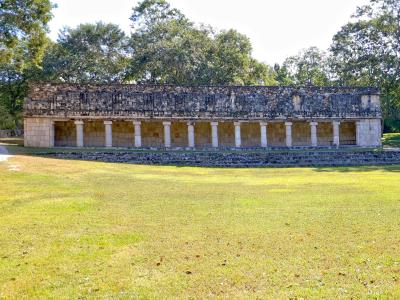
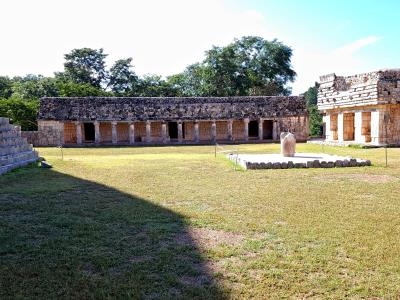
El Juego de Pelota - The Ball Game Court
Winning this popular game in the Mayan world was about prestige, human sacrifices, and receiving a nod from the gods. It was a rite. The (around) 10" rubber ball had to be in constant movement and go through the rings placed on the slanted platforms (built around 900 A.D.) and could only be sent there by hitting it with hips, knees, and elbows (there was also something similar to a bat).
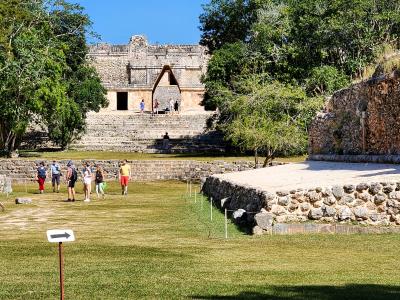
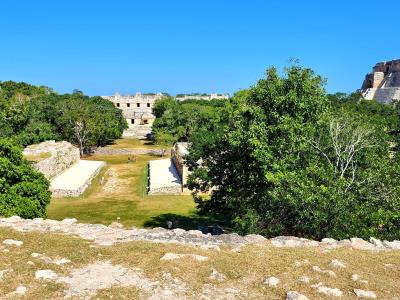
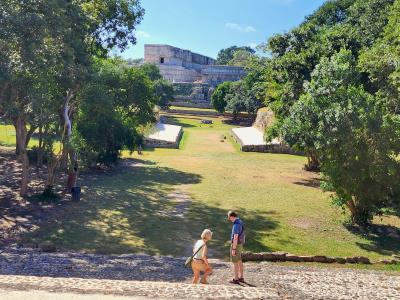
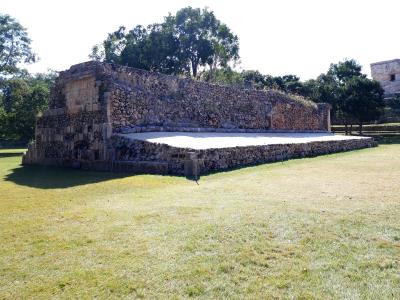
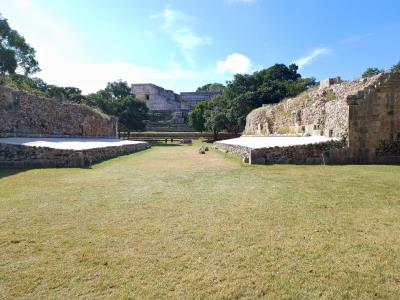
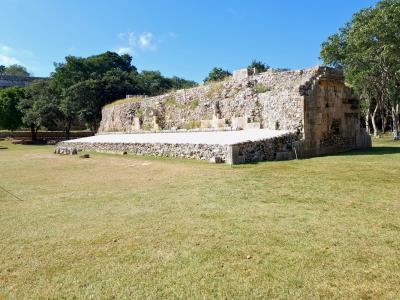
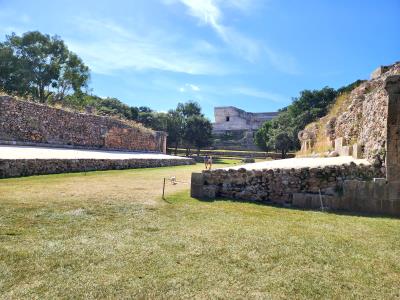
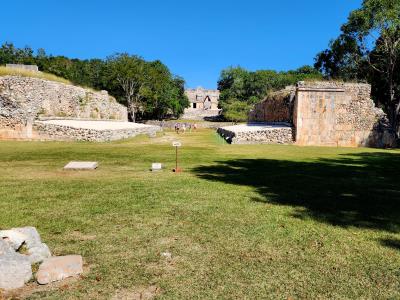
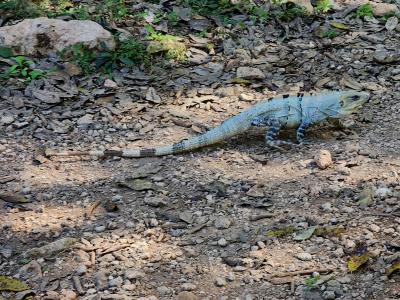
La Gran Pirámide - The Great Pyramid
At 98' high, it’s almost as tall as the Pyramid of the Magician (17' shorter). The nine sections of this structure, built in the mid-8th Century, are crowned with great views of the site and by the Temple of the Macaws (because you see depictions of macaws up there).
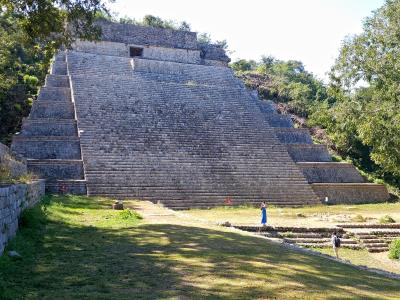
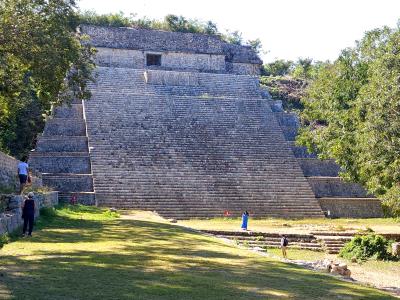
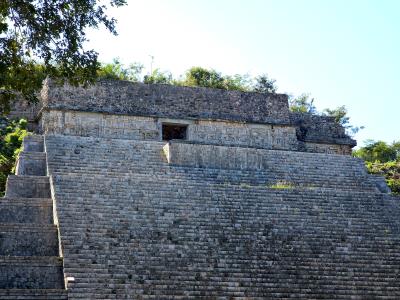
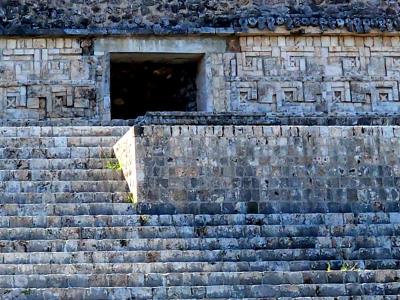
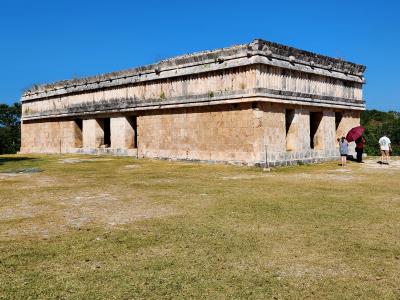
The House of Turtles
Compared to the massive ornamentation of the other buildings this one is simpler but the colonnade crowning the top, typical of the late Flourishing Puuc style around 900 A.D.-1000 A.D., gives it a stately feeling.
What about the cute turtles? They think their shells represented the surface of the earth. However, turtles were associated with rain, so historians think this was a water-related worshipping temple.
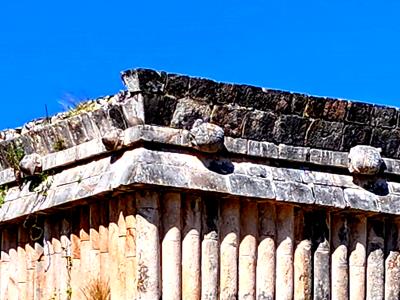
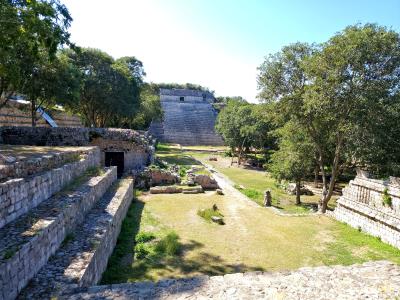
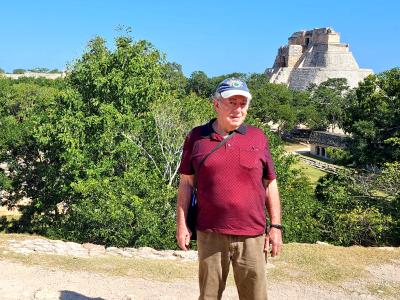
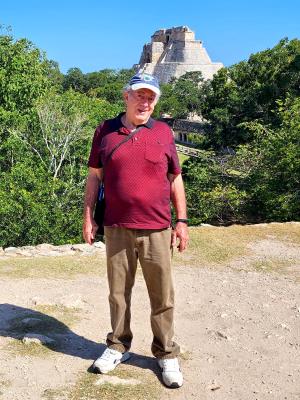
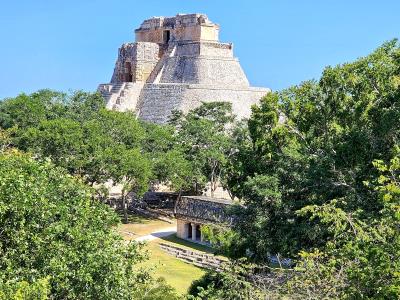
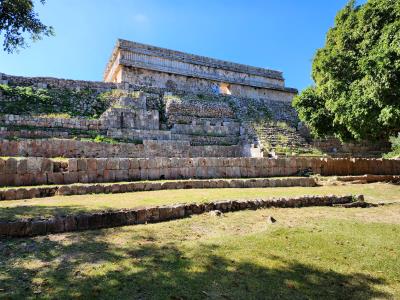
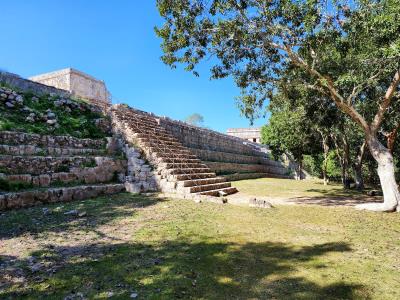
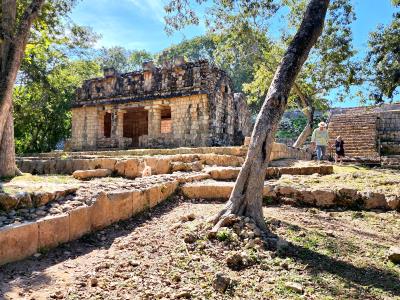
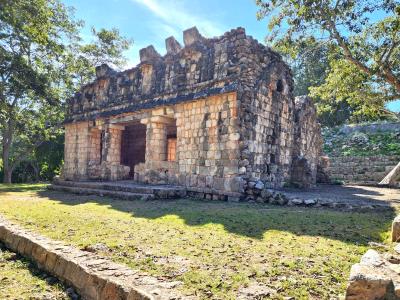
La Casa del Gobernador - The Governor’s House
The governor had a great view from his huge, beautifully ornamented palace, divided into three sections by triangular porticos. It was built upon the hill between 900 A.D. and 1000 A.D., where god Chaac kept a watchful eye on everybody from every corner (there are as many as 103 Chaac masks).
Chaac was the god of the rain, and that was the only way they could get water. So they had to keep him happy and count on his mercy. Experts think the design of the facade refers to the cycle of life and the path of the sun, and it’s dedicated to Venus. In the center of the building, the masks share the guard duties with serpents, surrounding the high chief (Halach Uinic or “Lord Chaac”), who is wearing a crest of feathers.
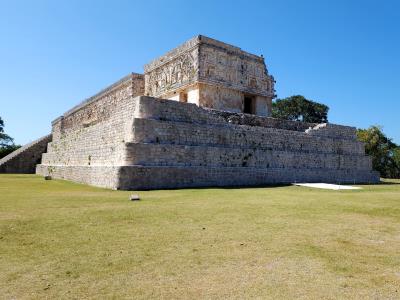
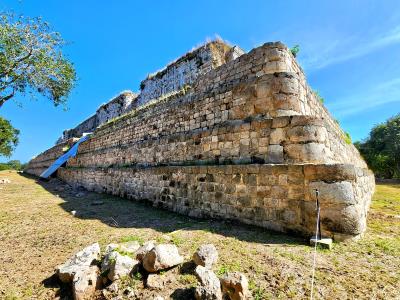
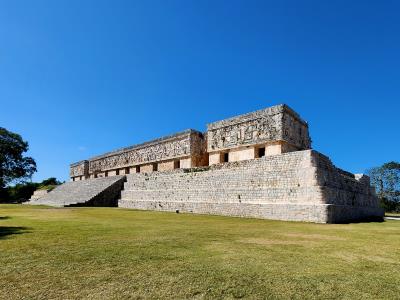
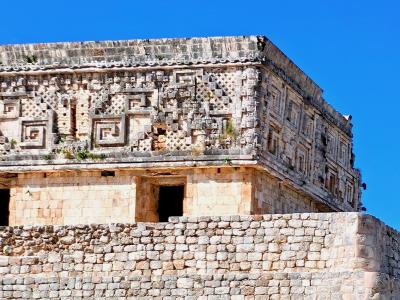
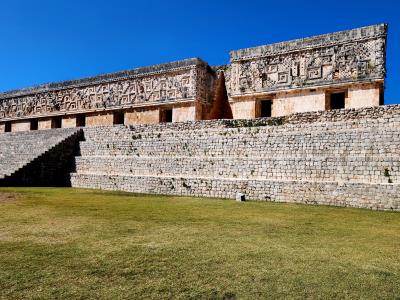
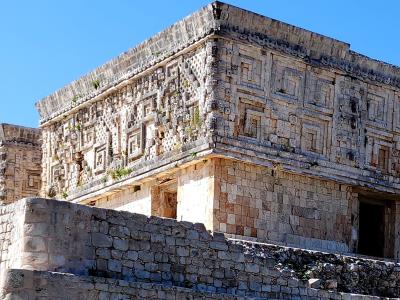
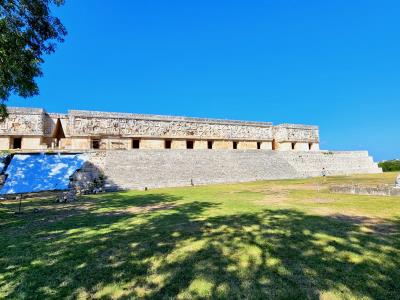
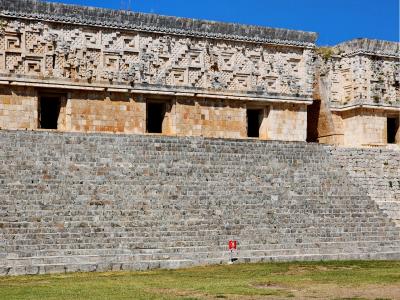
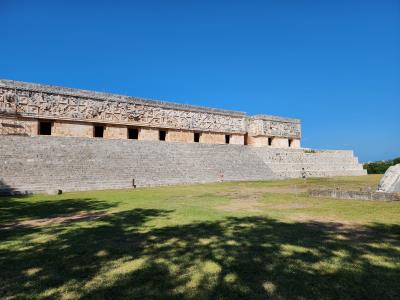
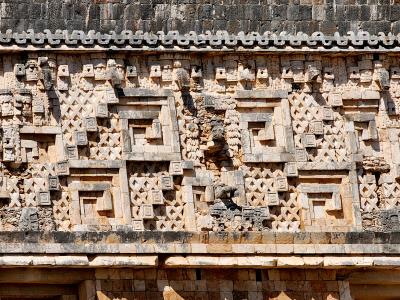
BELOW:
By the House of the Governor
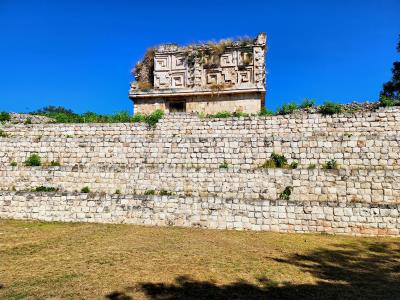
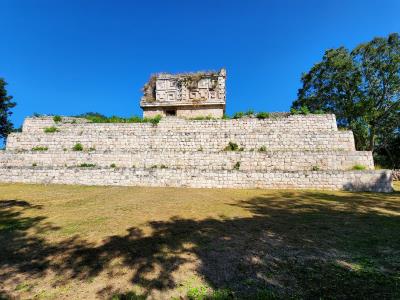
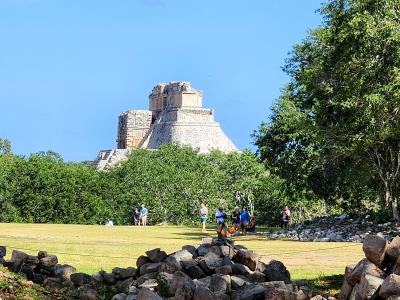
The Throne of the Jaguar
The throne was made of limestone and archaeologists found more than 900 valuable pieces inside: jewelery, weapons, stones, vessels, and other stuff. For Mayans, the big cat signifies power and majesty. Something they could never have enough of.
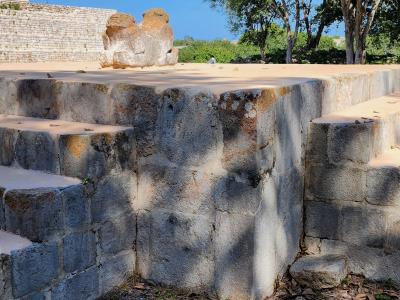
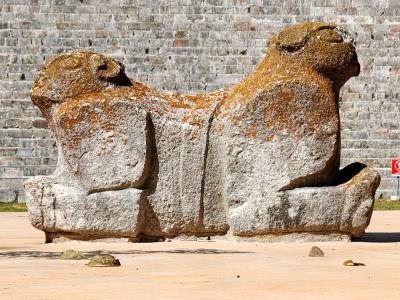
The Dovecotes - Pigeon House Group
West of the Great Pyramid in Uxmal, the Dovecote, also known as House of the Pigeons (Casa de Palomas in Spanish) is the name given to the northern enclosure of an amphitheater courtyard bordered by multi-chamber, long-range palaces which mostly lie in ruins.
Of all the remains in the Pigeons Group, the most staggering is the Dovecote. The name comes from its most prominent feature, a gabled roof comb comprised of nine triangular units with perforated apertures that resemble a dovecote with its many holes used by birds for nesting. While the intent of this structure was not to house birds, it houses one of Uxmal’s best-kept secrets.
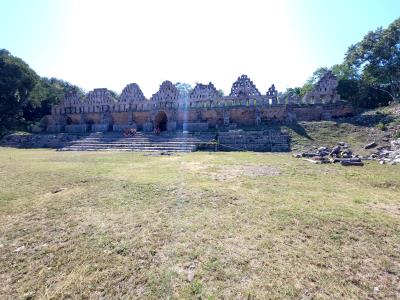
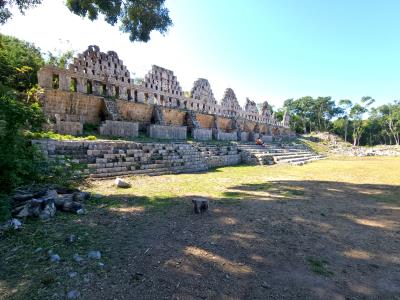
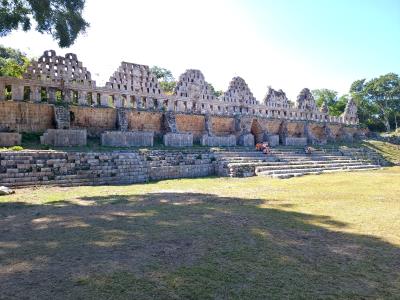
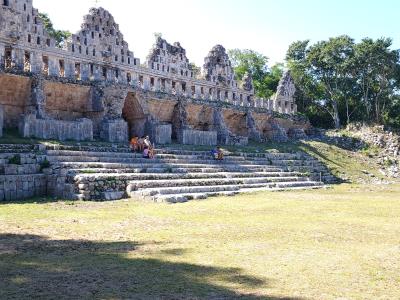
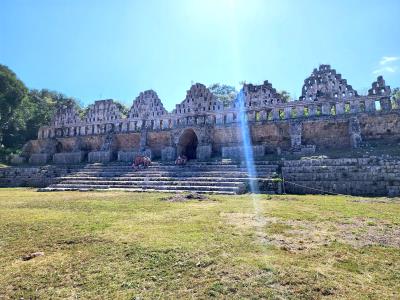
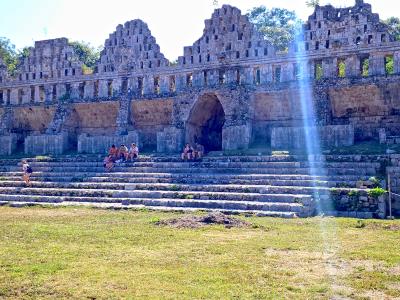
Behind the Pigeon House Group
There is a large area which I can find no information about anywhere. To the left is what looked somewhat like an underground "pipe" that extends a great distance - or maybe a gradually collapsing wall. There is a HUGE open area with the remains of a circular pedestal with the remains of a small structure on it and at the farthest end the remains of a structure and 2 very large square columns placed close together.
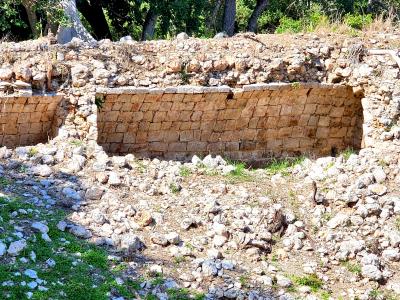
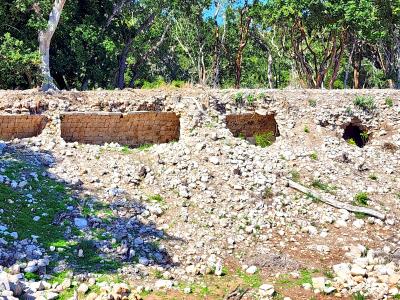
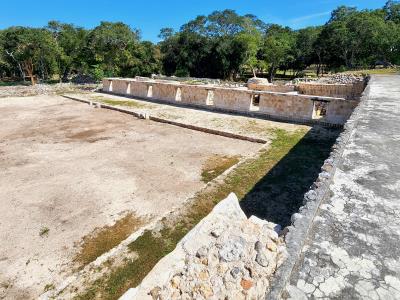
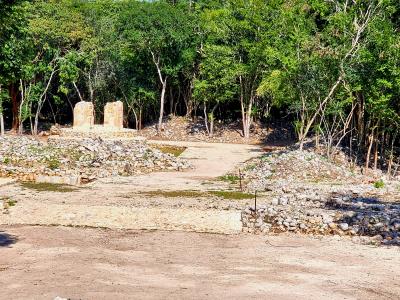
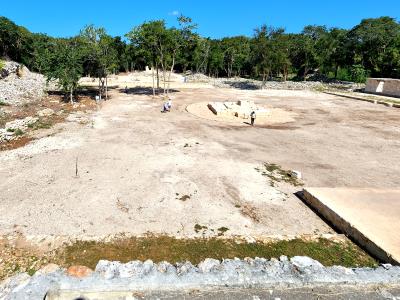
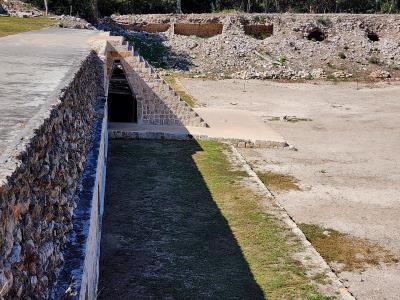
Nunnery Quadrangle
The Nunnery Quadrangle is a very impressive structural group. There were no nuns here but a Spaniard who arrived in the 16th century gave it that name because it reminded him of the convents in Spain. This group rings a very large courtyard featuring highly decorated one-story palaces oriented to the cardinal directions.
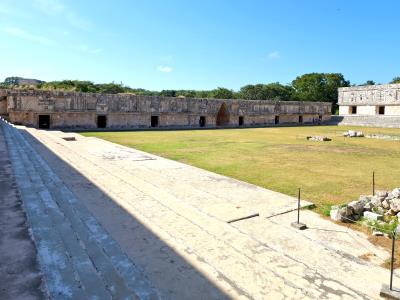
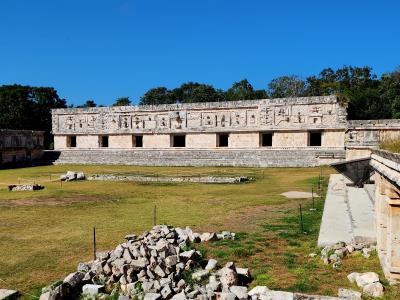
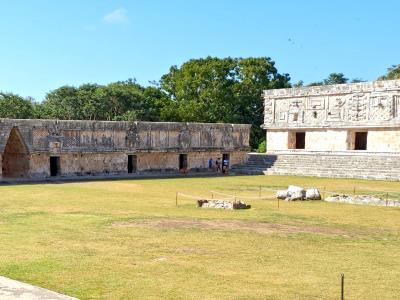
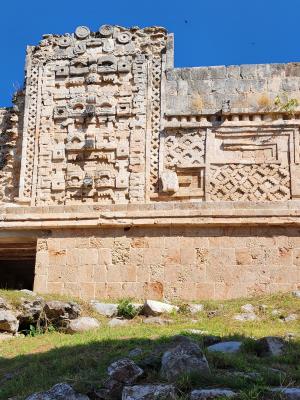
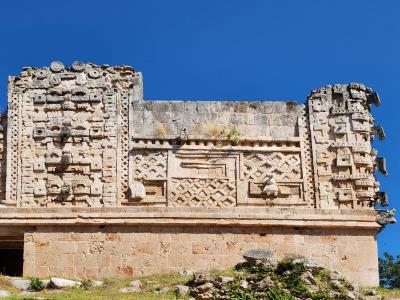
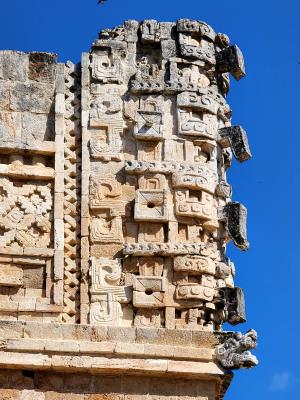
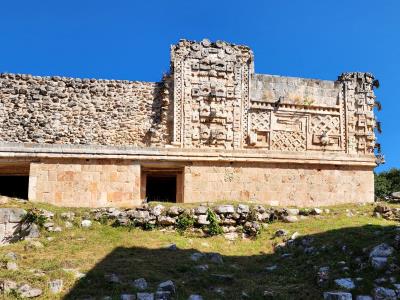
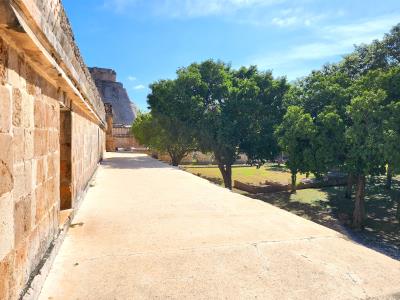
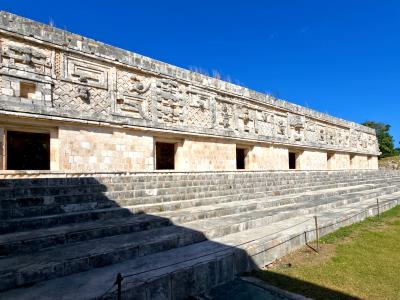
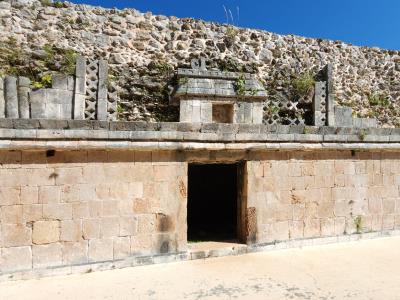
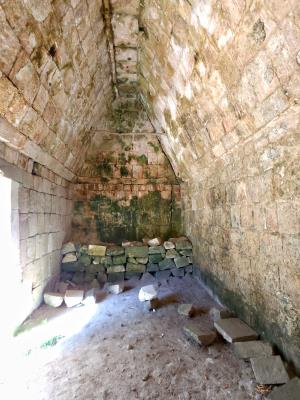
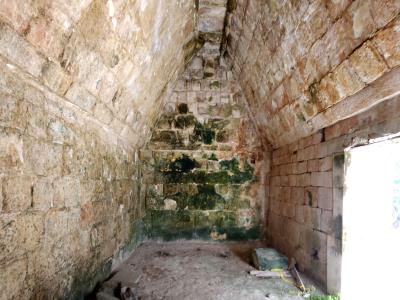
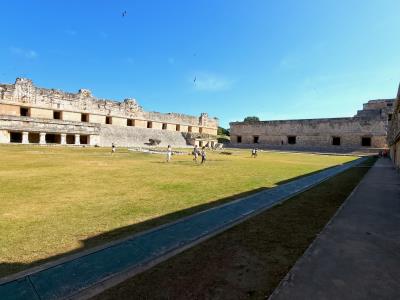
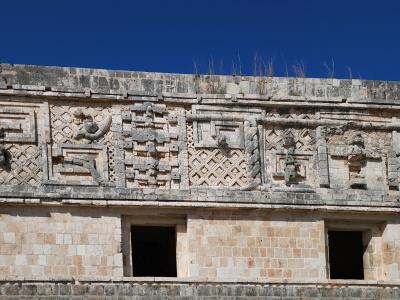
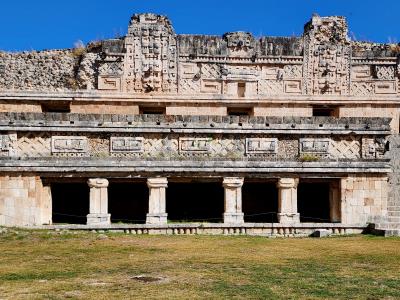
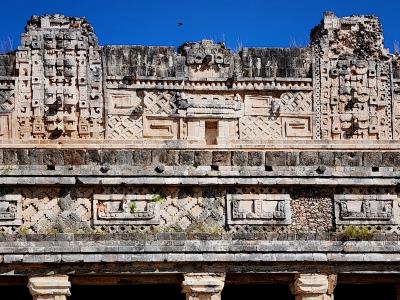
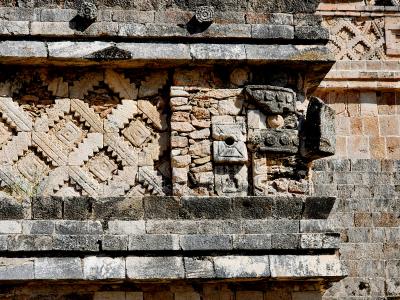
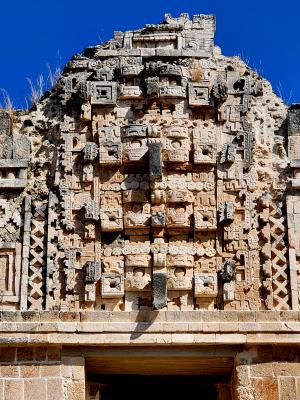
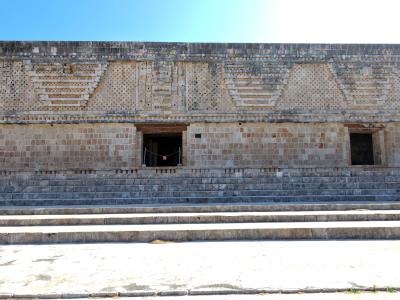
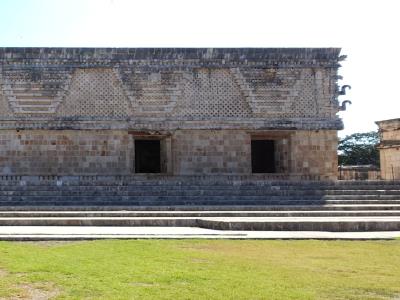
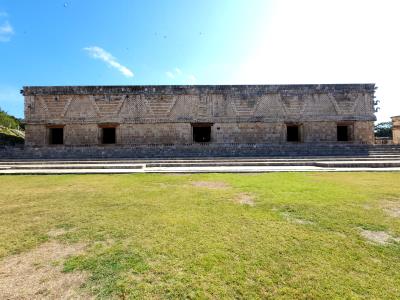
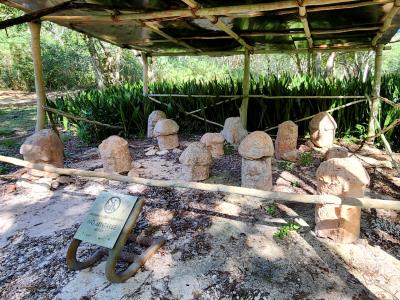
<< LEFT:
Los Falos - The Phalli
RIGHT >>
Ancient Stele
No longer readable
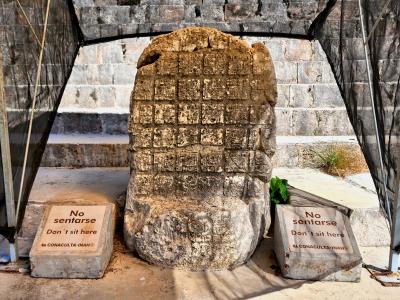
Kabah
Kabah, Lord of the Powerful Hand is an impressive Maya archaeological zone set at the foot of the Puuc Hills. Kabah was likely inhabited since as early as 500 BC. But like Uxmal, it hit its peak from around 600-1000 AD. At its height, the city was likely home to around 10,000 residents. The site is the second largest ruin site in the area after Uxmal, and is one of a series of Maya ruins that can be found in the general area.
What visitors have access to today is only a small portion of the entire site. This is simply because much of the ancient city has yet to be excavated. Archaeologists believe that Kabah once extended several square kilometers, most of which is now covered in dense forest.
South Plaza
This is the entrance - so there is a large set of steps to climb to get started. Like all the Mayan steps I have encountered, they are narrow and steep. It leave me with the impression the Mayans had small feet and long legs.
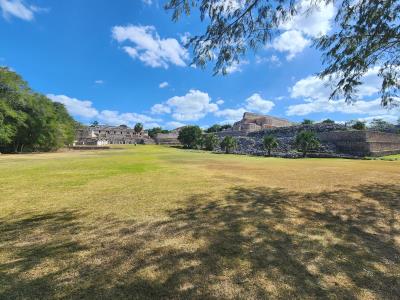
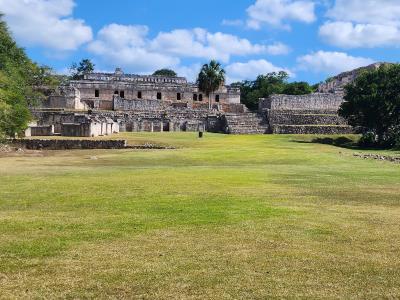
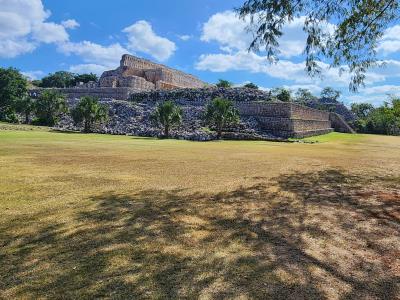
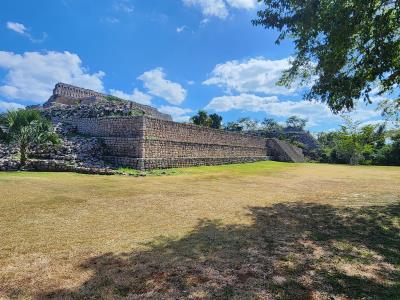
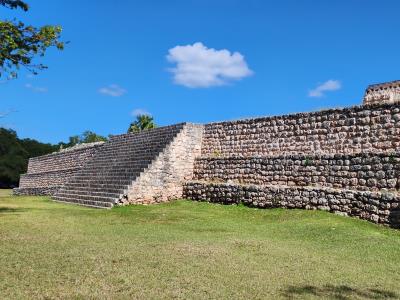
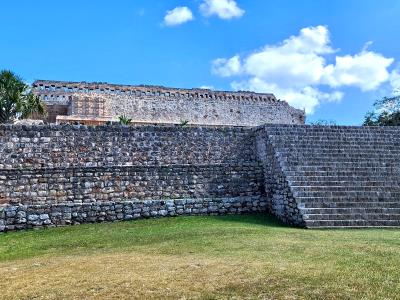
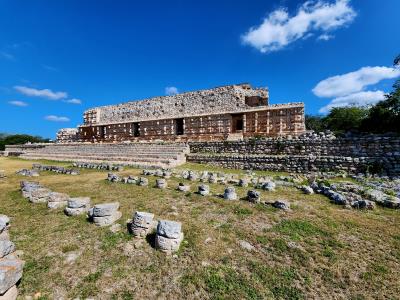
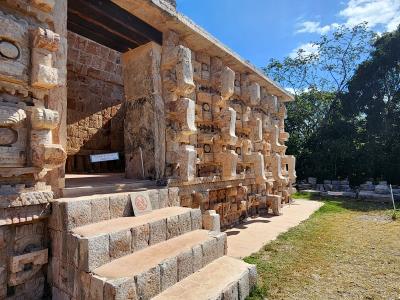
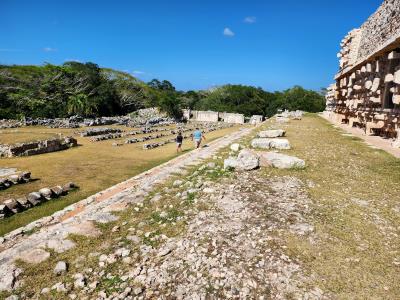
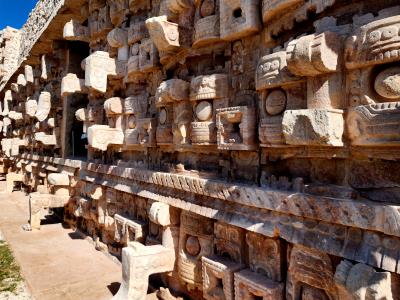
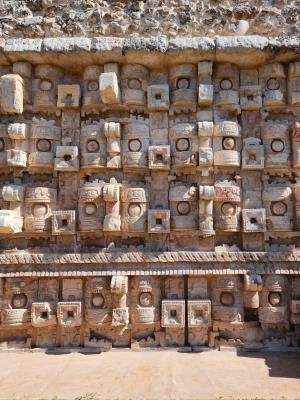
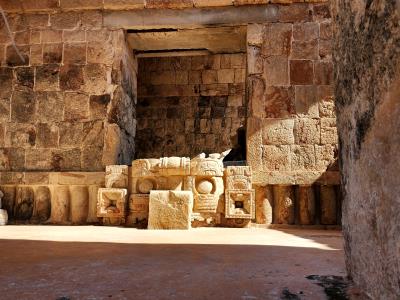

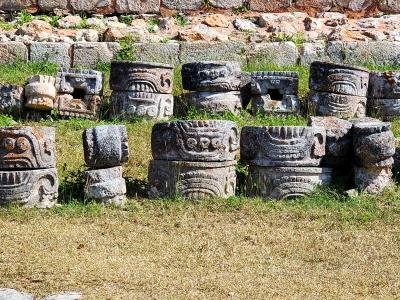
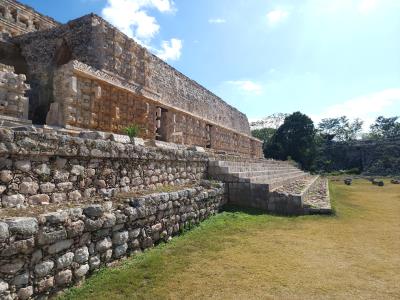
Codz Pop
The other side...
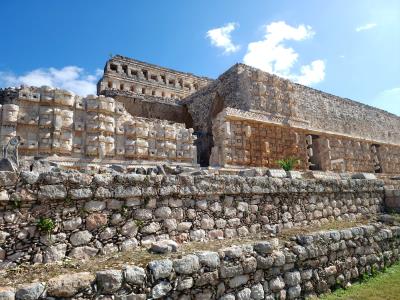
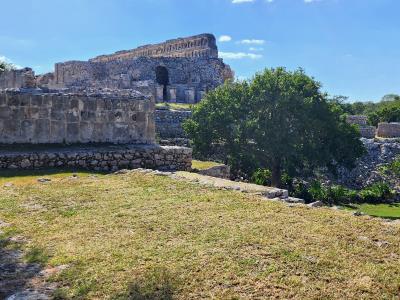
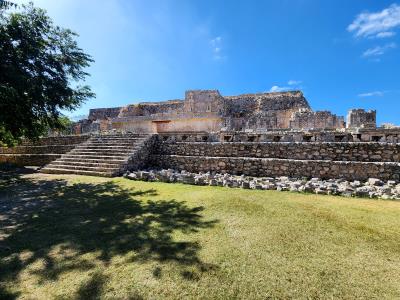
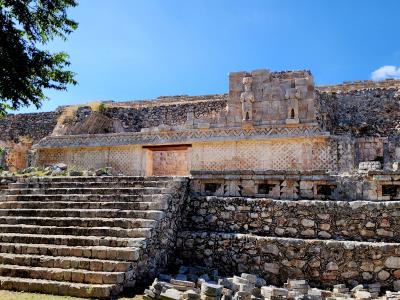
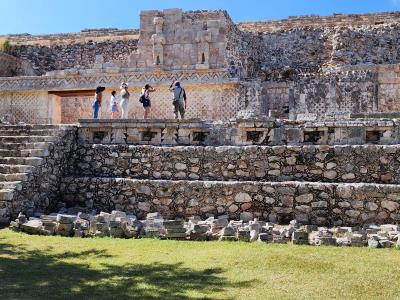
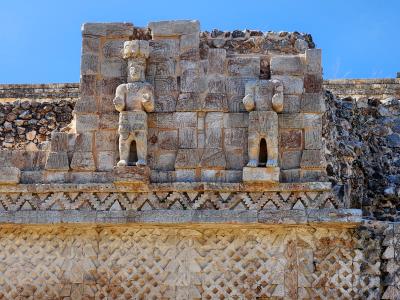
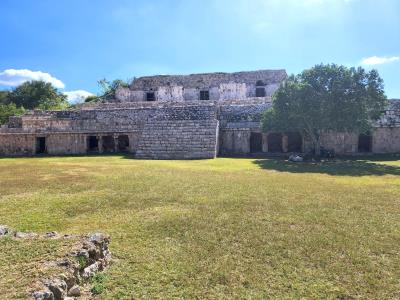
Teocalli
Structure 2C3 - Considered to be an elite residential structure
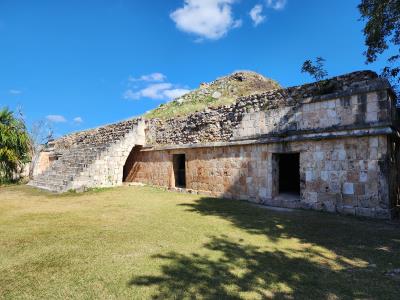
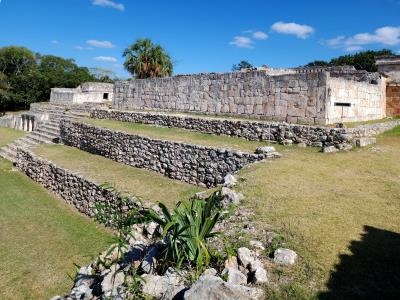
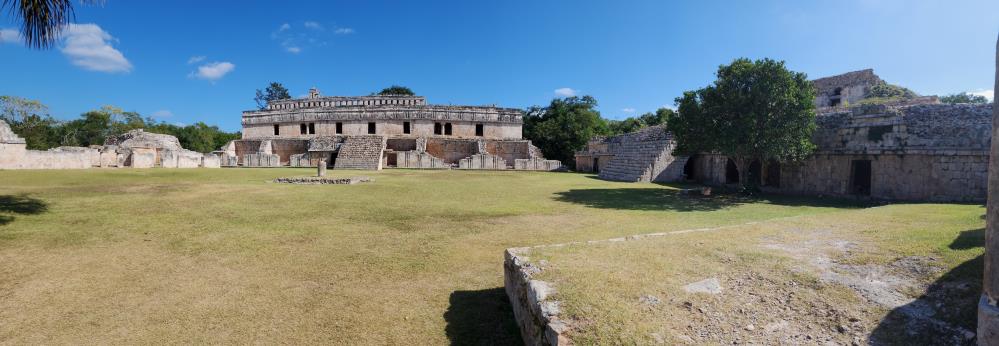
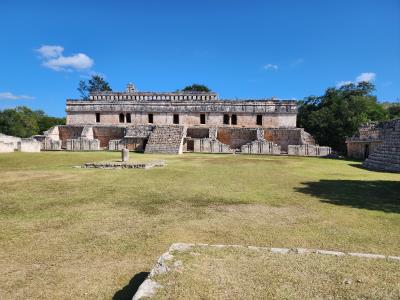
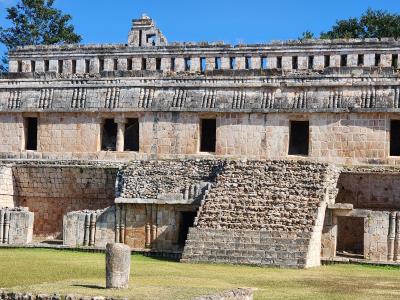
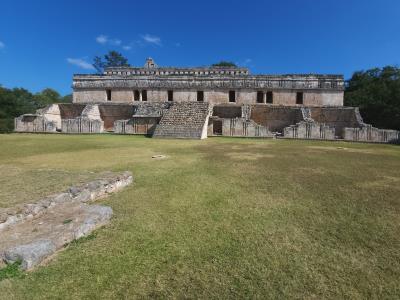
The Arch
In the forest is the Arch - the official entrance in bygone days
